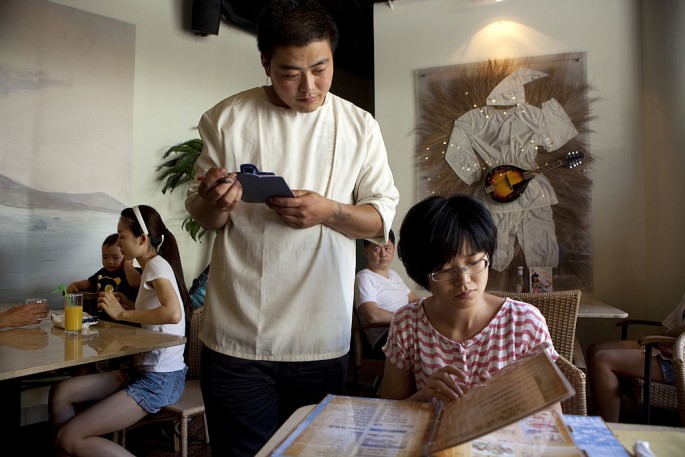A growing number of international luxury brands such as Gucci, Prada and Hermes, have ventured into China's food industry and the trend continues, according to an article by the Global Times.
For some luxury brands, Beijing has become one of the top choices. Louis Vuitton, which owns the Crystal Jade La Mian Xio Long Bao restaurant, has opened two restaurants in the city.
Montblanc, a German luxury brand, manages a chocolate coffee shop in Sanlintun while British luxury brand, Alfred Dunhill, opened Alfie's, a restaurant, in Beijing in 2013.
"Luxury has become a common cross-border phenomenon," Huang Shuxiong, a partner at an advisory firm, said.
"It can take advantage of brand influence, and mine their brand value," Huang was quoted as saying in the report. "By cleverly publicizing its brand culture and lifestyle concepts, luxury-branded restaurants and other enterprises can firmly lock in high-end consumer groups."
The report said that luxury brands have enticed many Chinese food lovers who can afford to spend money on lavish meals in a luxurious environment. Some people however, are concerned that foodies focus too much on brand and that luxury restaurants may soon lose their consumers.
According to the report, this is due to brand effect in which fans of luxury brands want to experience everything related to their favorite brands, while others believed it as a way of improving their lifestyle.
Zhang Jieke, 33, a food artist in Beijing, questions if the "luxury restaurant" concept was sustainable.
"What makes many consumers eager to try these kinds of restaurants is not the food they have. It is the novelty of the experience and the concepts associated with a lifestyle of luxury or high-quality personal taste that draws them," Zhang said.
"But after the novelty wears off, it will be hard for luxury restaurants to keep repeat customers," Zhang added.
On the contrary, Zhang said that an average person can buy similar types of food at a lower price in Shanghai's street restaurants and be sufficiently fed.
He added that many young Chinese are willing to spend money and enjoy highly priced meals, but for them the most important thing is they have satisfied their need for luxury brands. For people who cannot afford to buy luxury items, experiencing the lifestyle in luxury restaurants fill the gap for these people.
"Most of them can't afford a luxury bag or watch. But hundreds of yuan for one dinner per month in a luxury-branded restaurant is acceptable to them," Zhang said.
For luxury brands, it has been a smart decision for them to break into the Chinese food industry, Huang said. The decline in sales of luxury goods in 2014 drove luxury brands to expand their sales model and add diverse elements to their brands, he added.
"Luxury brands gradually turn themselves from selling brands and products to selling a lifestyle, which includes restaurants," said Zhou Ting, director of Fortune Character Institute, a high-end lifestyle research and advisory body in China, said.
It is also easier for restaurants to reach the public and luxury brands are aiming for more middle-class consumers, including young Chinese.
According to Patrizio Sacchetto, director of operations at COVA Beijing, luxury brands can use their high-quality food, service and international vision to attract consumers. He said getting into the food business provided luxury brands with variety and competition.
"China is an important market for us. Chinese young people are our target because they are open-minded and willing to try new things," Sacchetto added.



























